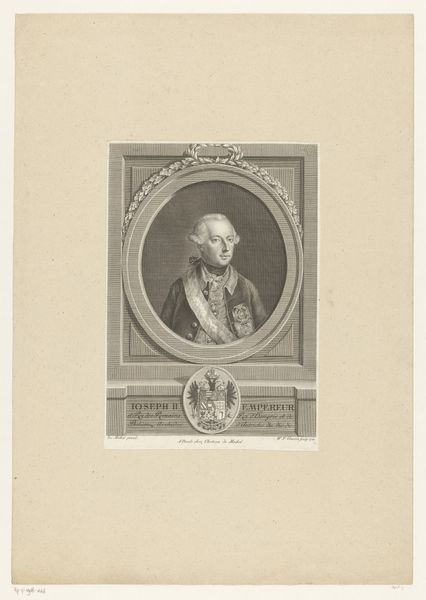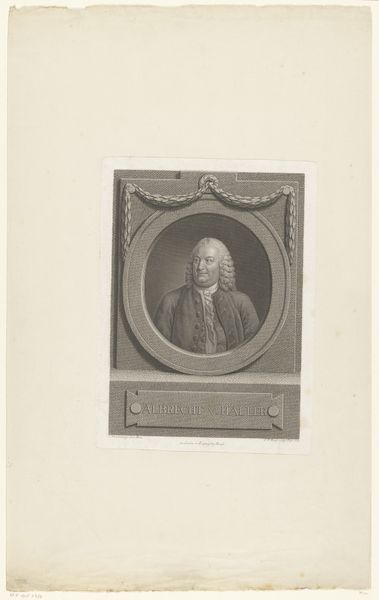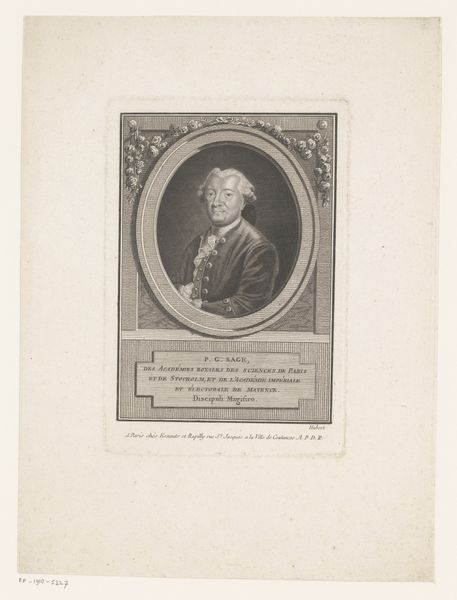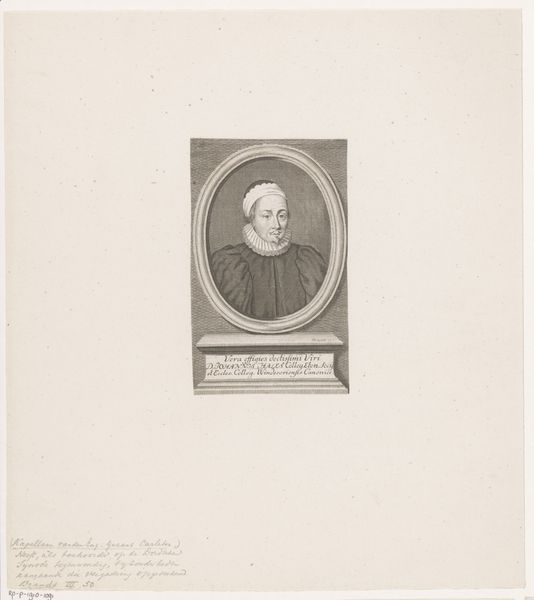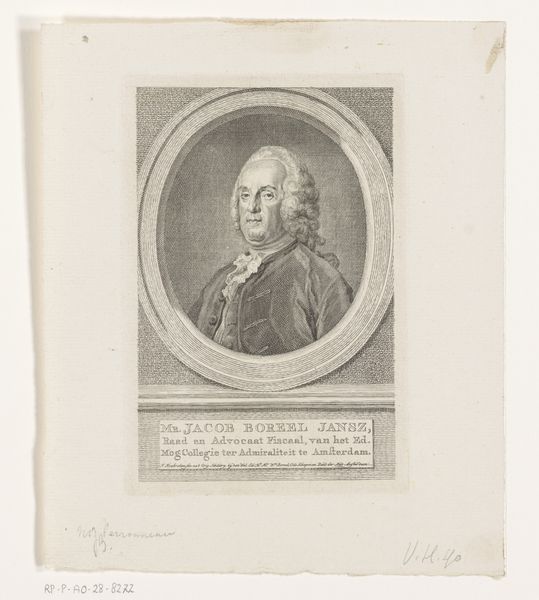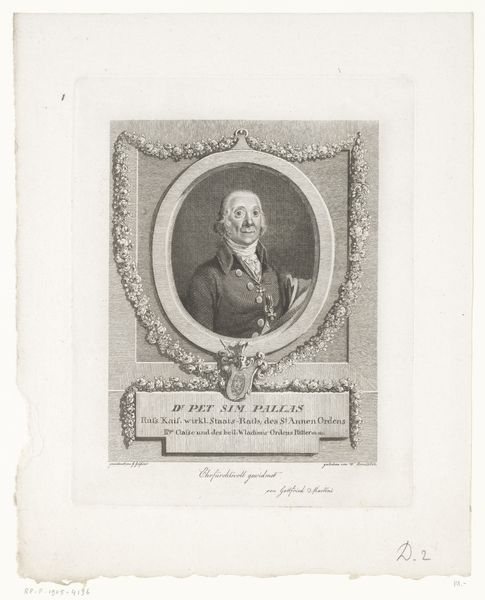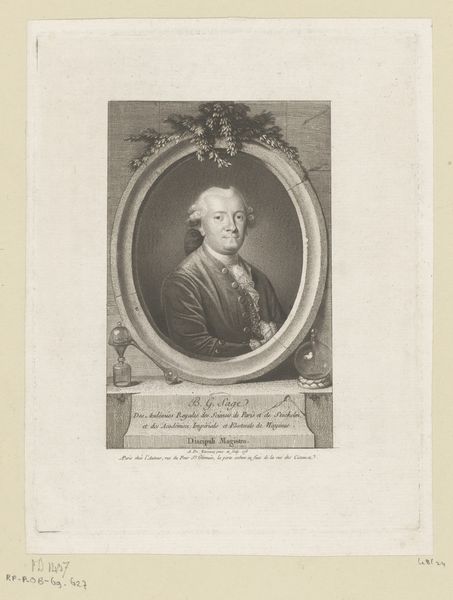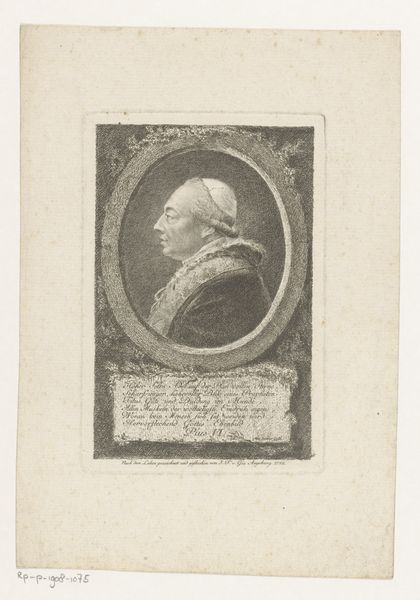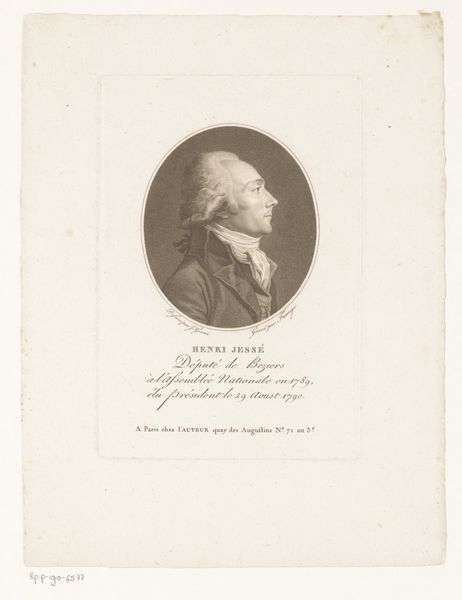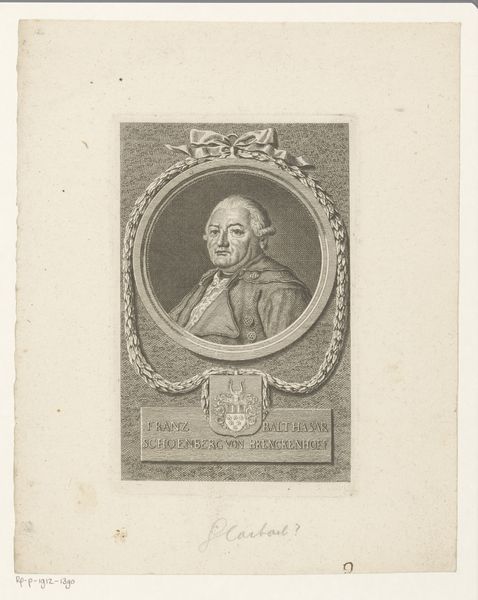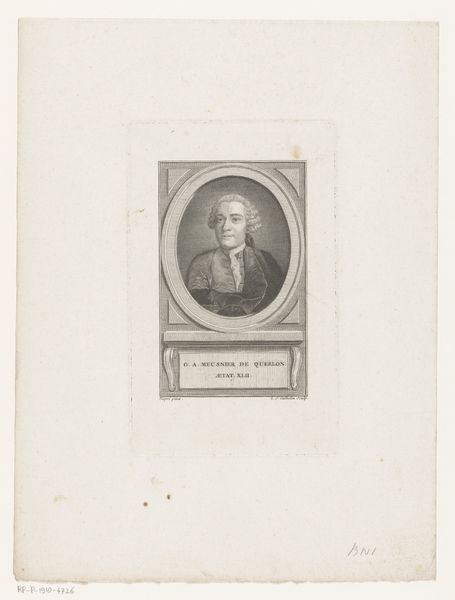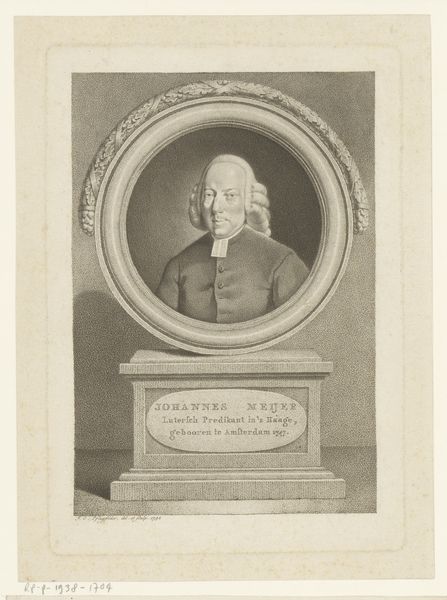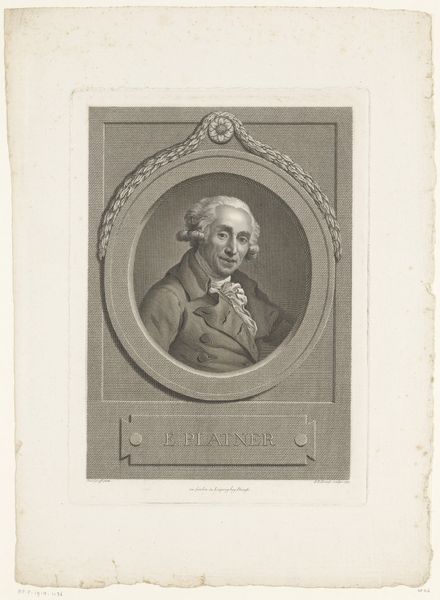
drawing, engraving
#
portrait
#
drawing
#
neoclacissism
#
19th century
#
engraving
Dimensions: height 274 mm, width 193 mm
Copyright: Rijks Museum: Open Domain
Carl Gottlieb Rasp’s portrait of Johann Christoph Prentzel is a delicate engraving, made with precise cuts into a metal plate, likely copper. This was then inked and printed onto paper. The fine lines create an illusion of depth, capturing the texture of Prentzel's coat and the soft contours of his face. The engraver's skill is evident in the way light and shadow are rendered, creating a sense of realism. Rasp’s expertise reminds us that printmaking was not merely reproductive. It was a highly skilled craft, demanding hours of labor and a deep understanding of materials. Engravings like this were part of a burgeoning print culture. They circulated widely, making images accessible to a broader public. This portrait therefore speaks to social mobility, and to the way that images could elevate individuals within the social sphere. It also reflects the increasing importance of skilled labor in the 18th century. In this period, craft and fine art were closely aligned. By considering both the artistry and the process, we gain a richer understanding of Rasp's work.
Comments
No comments
Be the first to comment and join the conversation on the ultimate creative platform.
